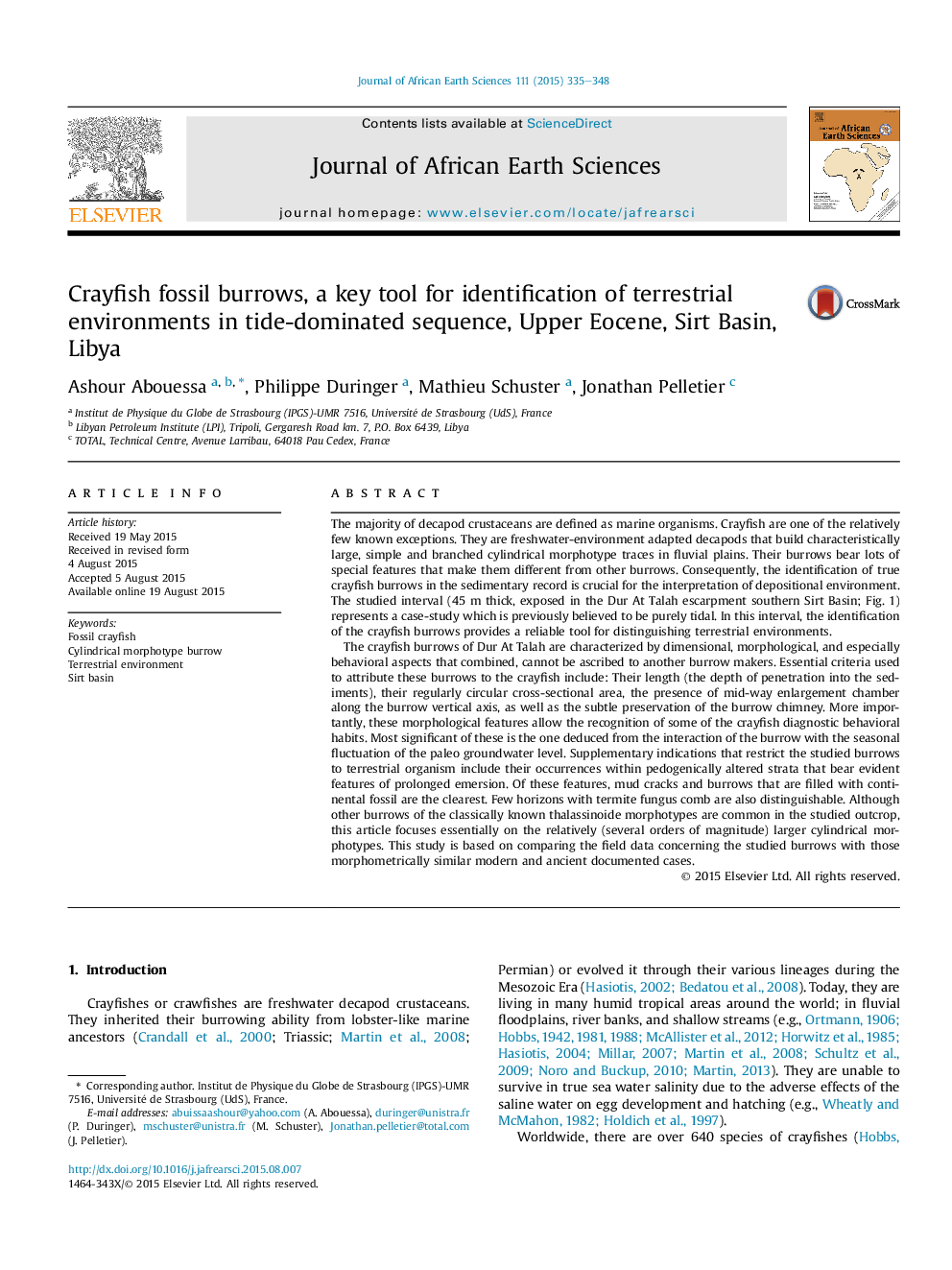| کد مقاله | کد نشریه | سال انتشار | مقاله انگلیسی | نسخه تمام متن |
|---|---|---|---|---|
| 4728507 | 1640196 | 2015 | 14 صفحه PDF | دانلود رایگان |

• Crayfish fossil burrows is a useful indicator of terrestrial environments.
• Relatively large cylindrical traces could be produced by many continental animals.
• The presence of size-enlargement is a diagnostic feature of the crayfish burrow.
The majority of decapod crustaceans are defined as marine organisms. Crayfish are one of the relatively few known exceptions. They are freshwater-environment adapted decapods that build characteristically large, simple and branched cylindrical morphotype traces in fluvial plains. Their burrows bear lots of special features that make them different from other burrows. Consequently, the identification of true crayfish burrows in the sedimentary record is crucial for the interpretation of depositional environment. The studied interval (45 m thick, exposed in the Dur At Talah escarpment southern Sirt Basin; Fig. 1) represents a case-study which is previously believed to be purely tidal. In this interval, the identification of the crayfish burrows provides a reliable tool for distinguishing terrestrial environments.The crayfish burrows of Dur At Talah are characterized by dimensional, morphological, and especially behavioral aspects that combined, cannot be ascribed to another burrow makers. Essential criteria used to attribute these burrows to the crayfish include: Their length (the depth of penetration into the sediments), their regularly circular cross-sectional area, the presence of mid-way enlargement chamber along the burrow vertical axis, as well as the subtle preservation of the burrow chimney. More importantly, these morphological features allow the recognition of some of the crayfish diagnostic behavioral habits. Most significant of these is the one deduced from the interaction of the burrow with the seasonal fluctuation of the paleo groundwater level. Supplementary indications that restrict the studied burrows to terrestrial organism include their occurrences within pedogenically altered strata that bear evident features of prolonged emersion. Of these features, mud cracks and burrows that are filled with continental fossil are the clearest. Few horizons with termite fungus comb are also distinguishable. Although other burrows of the classically known thalassinoide morphotypes are common in the studied outcrop, this article focuses essentially on the relatively (several orders of magnitude) larger cylindrical morphotypes. This study is based on comparing the field data concerning the studied burrows with those morphometrically similar modern and ancient documented cases.
Journal: Journal of African Earth Sciences - Volume 111, November 2015, Pages 335–348